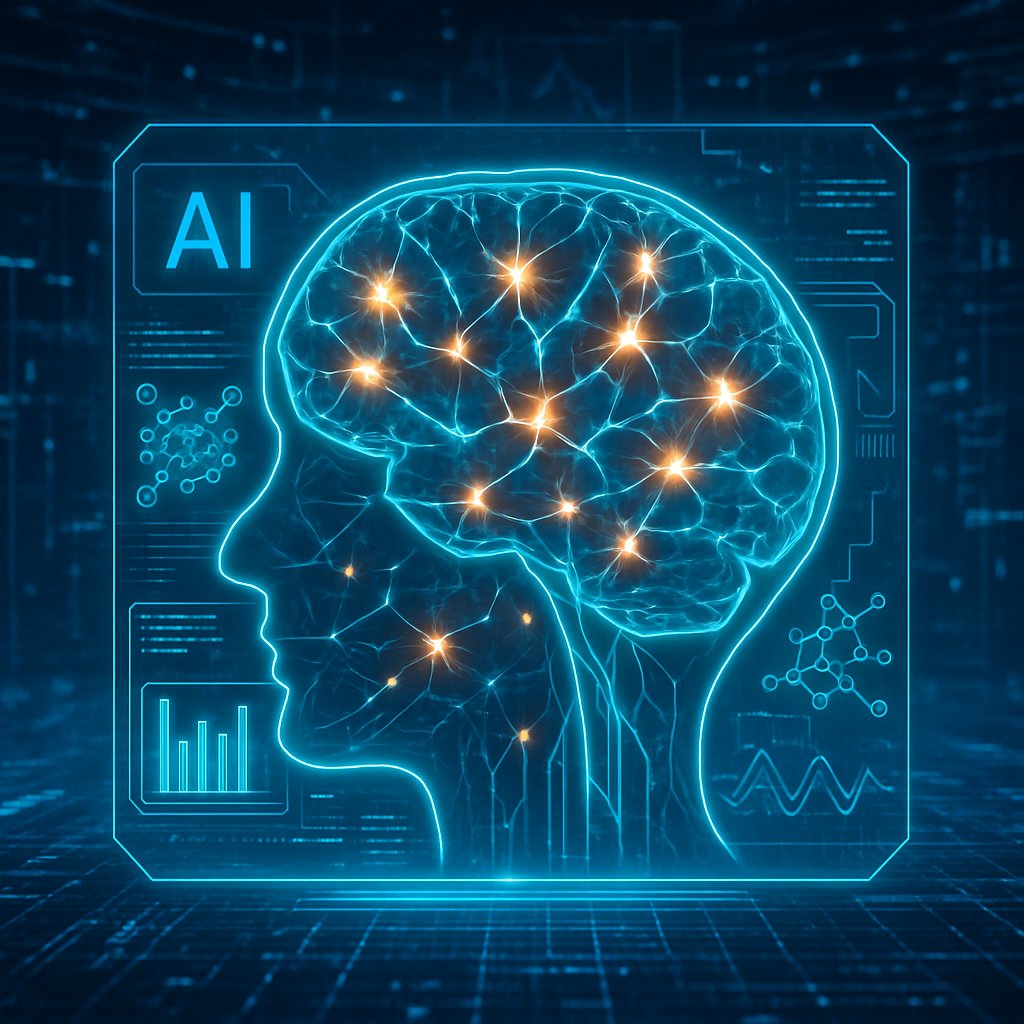Can AI Models Really Help Us Unlock the Mysteries of the Brain?
Artificial Intelligence (AI) is making some interesting strides these days, and its impact on various domains is becoming increasingly evident. Recently, researchers Thomas Serre and Ellie Pavlick dove into the burgeoning field of AI foundation models and their potential to transform brain science. So, what does this mean, and how does it fit into the bigger puzzle of understanding our brains? Grab your favorite snack, and let’s explore this exciting intersection!
The Growing Buzz Around AI Foundation Models
AI foundation models, like the ones that power your favorite chatbots, learn from massive amounts of data—think millions of internet texts and images—without needing much help from humans. Generative pretraining, the approach behind models like ChatGPT, allows these systems to make sense of diverse data by learning to predict what comes next in a sequence. This transformative capability has sparked a lot of excitement not just in tech circles but also in brain research.
Imagine having a tool that could analyze neural data just as well as it processes human language. That's precisely why researchers are looking to harness foundation models for understanding the complexities of the human brain. While these models show high predictive accuracy in various tasks, the burning question remains: Can they really enhance our understanding of how the brain works?
From Simple Predictions to Deep Explanations
In their article, Serre and Pavlick point out that while foundation models are great at making accurate predictions, it's not enough to simply toss around statistics. The core challenge lies in moving from prediction to understanding. Essentially, researchers want to bridge the gap between what these models compute and the underlying mechanisms of neural activity and cognition in our brains.
The Training Paradigm
So how do these magical models get trained? They utilize an approach known as self-supervised learning (SSL). In simple terms, this means the models learn by guessing missing parts of their input data. For instance, they might ingest a sentence with a word missing and learn to predict that word based on the context provided by the rest of the sentence.
But here’s the kicker: while SSL has proven to be effective across various types of data—text, images, audio—how do you apply the same logic to the brain? The answer appears in understanding the pretrain-finetune recipe, where models are pre-trained with a broad dataset like a language model and then fine-tuned for specific applications, such as understanding neural signals or human behavior.
Real-World Applications: Where It Gets Exciting
AI foundation models are not just academic musings; they have practical implications across multiple fields, especially in neuroscience.
Unlocking Brain Functions
One striking example is the application of these models in deep brain stimulation for conditions like Parkinson’s disease. The precision and adaptability of AI can lead to more personalized treatment options for patients—a game-changer in the medical community.
Moreover, cutting-edge research from models analyzing the mouse visual cortex provides fascinating insights. These models can predict neuronal responses to various stimuli and gather valuable information on different cell types and their interconnectedness. The potential here is eye-opening: not only can we gather highly accurate data, but we could also pave the way for human neuroimaging advancements that enhance our understanding of brain states in clinical variables.
Behavioral Predictions with Centaur
Another foundational model, called Centaur, steps into the realm of psychology. Training on decision-making from numerous experiments, it better predicts human choices than classical cognitive models. It even adapts to different contexts, demonstrating a flexibility that older models lack. However, just like our earlier discussions on subjective experiences in neural activity, it still raises questions on whether this is true understanding or simply clever statistical fitting.
The Dual Challenge: Adults vs. Kids
This brings us to a notable distinction: while models are fantastic at fitting data, can they genuinely uncover the mechanisms behind cognition? The authors emphasize that simply achieving predictive accuracy isn't enough. We should ask whether these models can expose causal mechanisms or if they're just detecting patterns.
In the context of brain science, we need to ensure these AI-driven insights can transition from correlation to causation. Can AI models articulate not just what, but why certain neural patterns occur? Thus far, this has been a somewhat gray area.
Looking Toward the Future: Mechanistic Interpretability
To ensure that foundation models truly enhance our grasp of cognition, we need mechanistic interpretability. This emerging field aims to uncover the underlying computations of AI models in ways that align with biological neuroscience.
Recent advances have shown that we could potentially map functional subcircuits within these models. By analyzing hidden-layer activations, researchers can identify specific components that mimic known neural operations. This could help you reframe your understanding of both artificial and biological intelligence.
The outcome may not be a perfect replication of brain processes, but it could yield meaningful theoretical insights. The goal is to marry the worlds of AI and brain science in ways that enhance our knowledge rather than merely replicating connected patterns.
Key Takeaways
Foundation Models as Predictive Tools: While models like ChatGPT and Centaur offer high predictive accuracy, their real value lies in enhancing our understanding of brain mechanisms.
The Transition Challenge: The challenge isn't just mastering predictions; we need to bridge them into effective explanations of how the brain operates.
Versatile Applications: From personalized medical treatments to understanding complex cognitive behaviors, foundation models show potential across varied fields.
Need for Mechanistic Understanding: To transform how AI insights can shed light on brain functions, a move toward mechanistic interpretability is vital.
Clinical Implications: The practical use of these models in conducting specialized therapies and brain mapping signifies broader implications in neuroscience.
As we peer into the future, the collaboration between AI experts and neuroscientists could lead us to breakthroughs that might one day unravel the complexity of our own minds. Exciting times lie ahead as we explore the frontier where artificial intelligence meets brain science!

